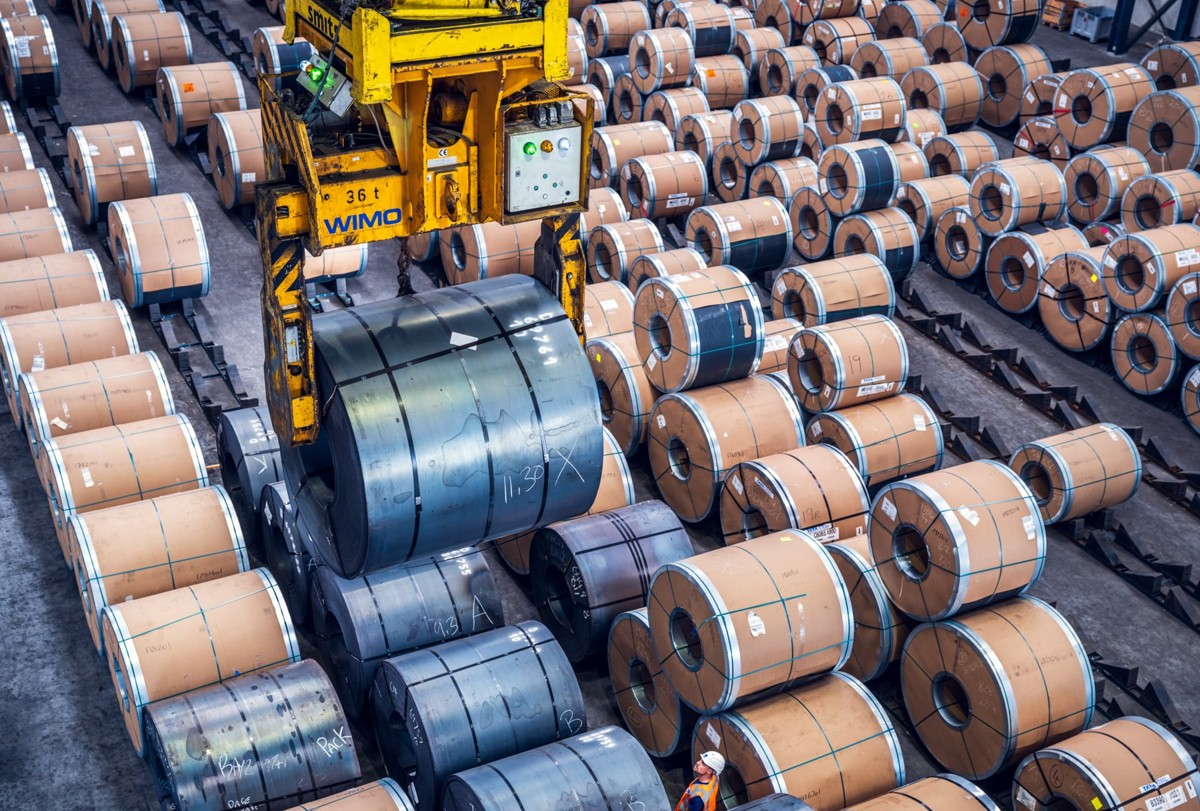Market Data

September 24, 2017
Ten Reasons Why SMU Price Momentum Indicator Adjusted to “Lower”
Written by John Packard
On Friday, Steel Market Update (SMU) adjusted our Price Momentum Indicator to Lower from Neutral. It is our opinion that flat rolled steel prices will move lower over the next 30 days for the following 10 reasons:
![]() First, when the head of commercial of a domestic steel mill tells SMU that “transaction pricing cannot go up now…” due to resistance from their customers, that is not a positive sign for higher steel prices.
First, when the head of commercial of a domestic steel mill tells SMU that “transaction pricing cannot go up now…” due to resistance from their customers, that is not a positive sign for higher steel prices.
Second, AK Steel announced a flat rolled price increase of $30 per ton on Sept. 6. Since then, not one mill east of the Rockies has followed AK’s lead.
Third, zinc prices on the LME are above $1.35 per pound, closing this past week at $1.39 per pound after spending most of the week above $1.40. Even so, three large mills, Nucor, U.S. Steel and ArcelorMittal USA, have not joined NLMK USA, AK Steel and two West Coast mills, USS/POSCO and California Steel, in raising the coating extras. This is another bearish sign regarding the confidence the steel mills have about being able to move prices higher.
Fourth, ferrous scrap prices did not increase at the beginning of September as was advertised by the scrap community prior to the beginning of negotiations. The domestic mills are not buying extra tons for the month of September and the belief is the scrap market will see sideways to slightly lower prices for October. If so, this is not a good sign for higher steel prices.
Fifth, the amount of time it takes to get a new spot order of hot rolled, cold rolled, galvanized or Galvalume steel produced is essentially unchanged over the past few months. When asked if domestic mill lead times were shorter or longer than normal, only 14 percent of the manufacturers reported longer than normal. When asked the same question, only 3 percent of service centers reported lead times as being extended. At the same time, 30 percent of the distributors responding to this question during our market trends survey this past week reported lead times as shorter than normal.
Sixth, steel mills continue to negotiate spot prices on all products based on the responses we received from our market trends questionnaire. When mills are willing to negotiate, that is normally a sign of a weaker order book than anticipated or needed. It is also a sign that the mills are competing with one another for spot business.
Seventh, in a separate question about the direction of prices during our market trends survey, only 14 percent of our respondents felt prices would move higher from where they are now. Thirty-four percent said prices would move lower and 52 percent are not seeing any clear-cut direction to prices right now. The lack of commitment by buyers and sellers of steel is not supportive of higher prices.
Eighth, service center inventories are “balanced” based on the responses we received from distributors during last week’s flat rolled steel market trends analysis. Only 9 percent of the service centers responding to the survey reported inventories as low and that they will need to build back inventories soon. The MSCI reported flat rolled inventories at 2.0 months of supply (not seasonally adjusted), while our own service center inventory index reported inventories as closer to 2.7 months of supply. Our Apparent Excess/Deficit model (which works with the MSCI data) has inventories as balanced with a slight deficit of -26,000 tons of flat rolled.
Ninth, more manufacturing companies are reporting service centers dropping spot prices (27 percent) than those reporting distributors raising prices (20 percent). When asking service centers if their company was increasing prices, only 7 percent said yes (the same percentage said no). It is very difficult, if not impossible, for steel mills to increase prices in an environment where service centers are not supporting higher spot prices to their end customers.
Tenth, foreign steel imports continue to be very close to 3.0 million tons and have not yet dropped back to the anticipated 2.5 million ton or lower level. Flat rolled imports are trending lower, but continue at a brisk pace.
Steel Market Update references responses we received during our flat rolled steel market trends analysis, which was conducted over the course of this past week (we do one twice a month). Our Premium level member companies have access to a PowerPoint presentation of a large portion of the data collected during the process. If you would like to become a Premium subscriber or if you have questions about our Premium product, please contact us at info@SteelMarketUpdate.com or by phone at 800-432-3475.
Written by: John Packard – John@SteelMarketUpdate.com







